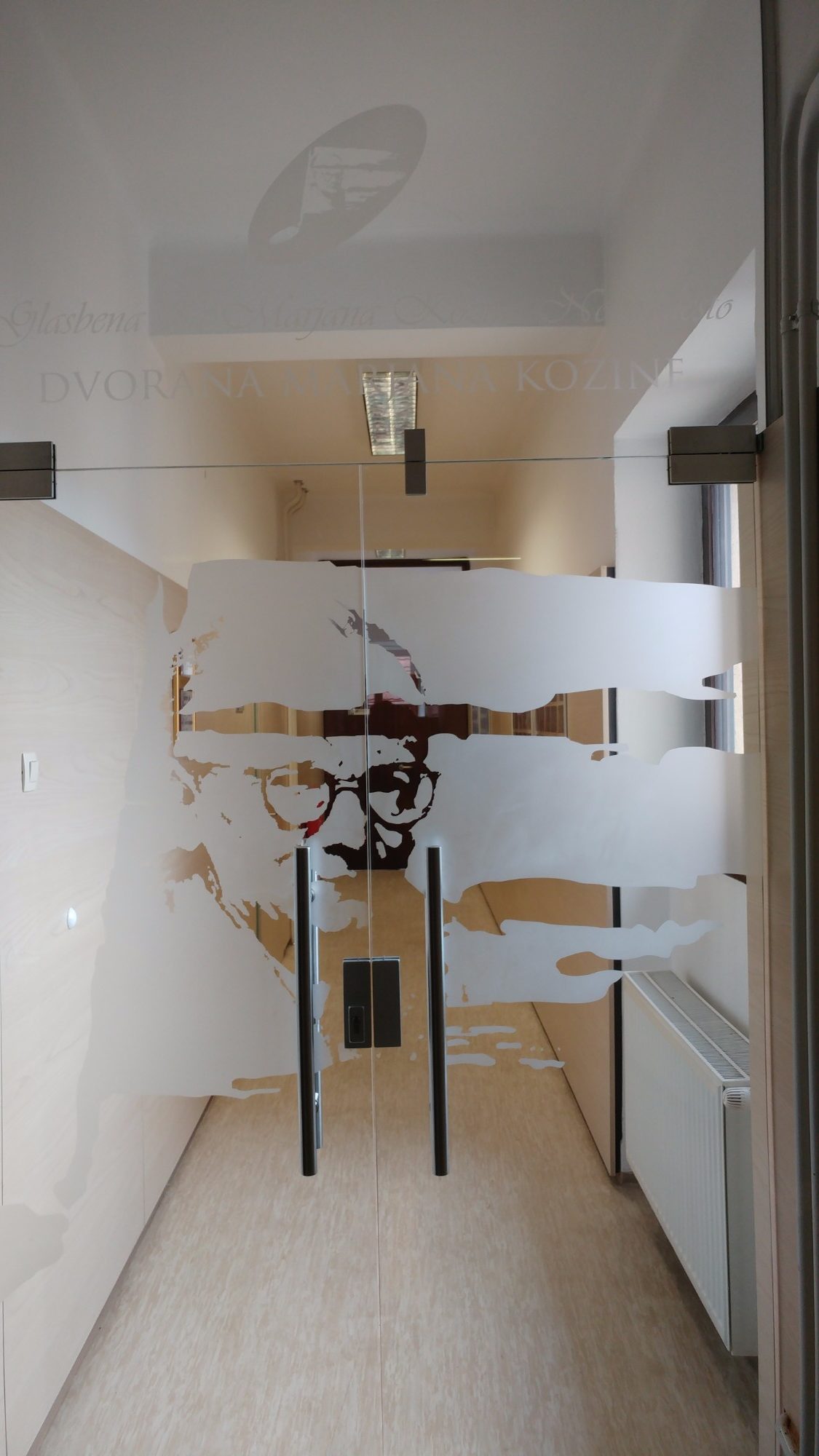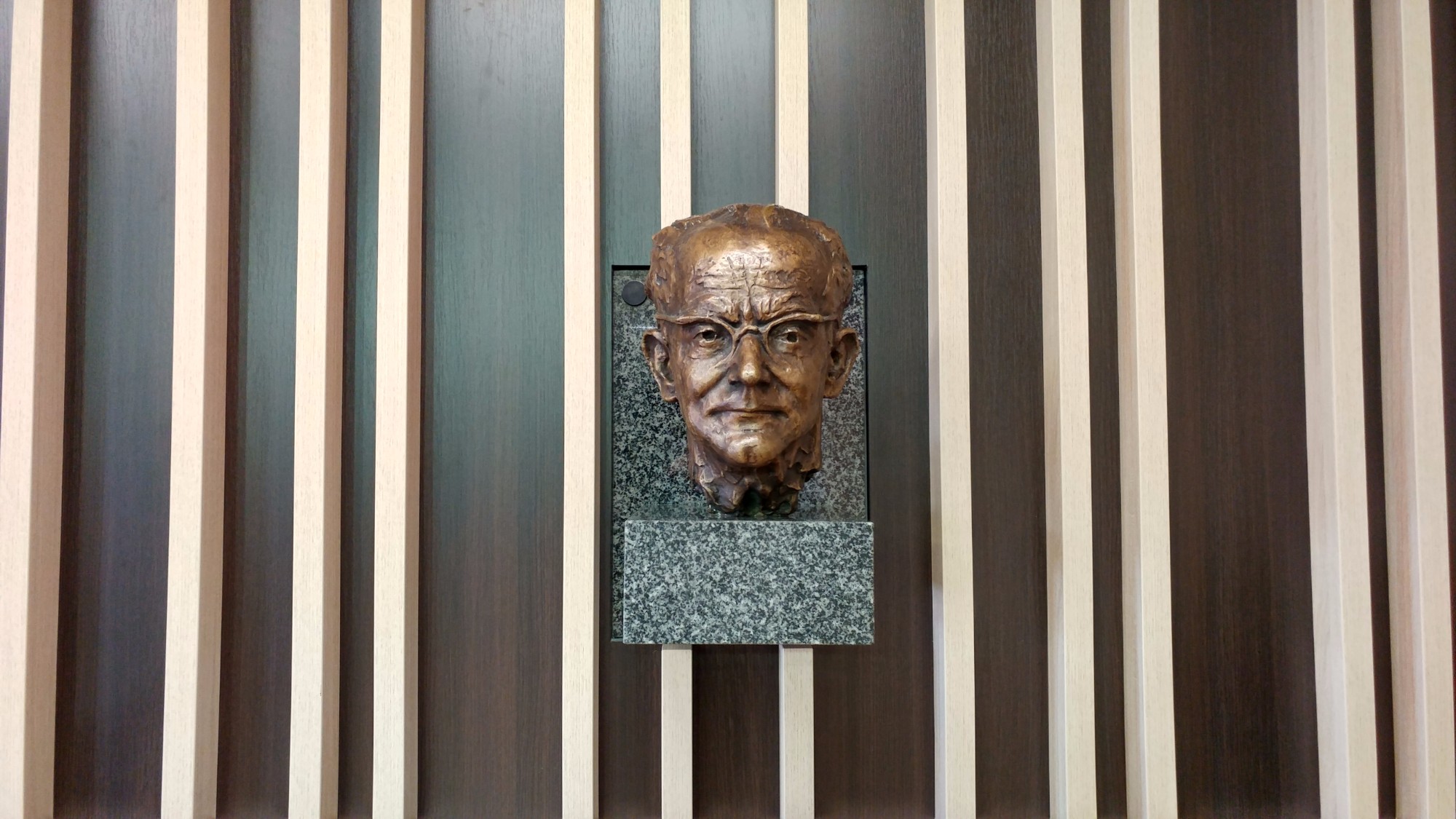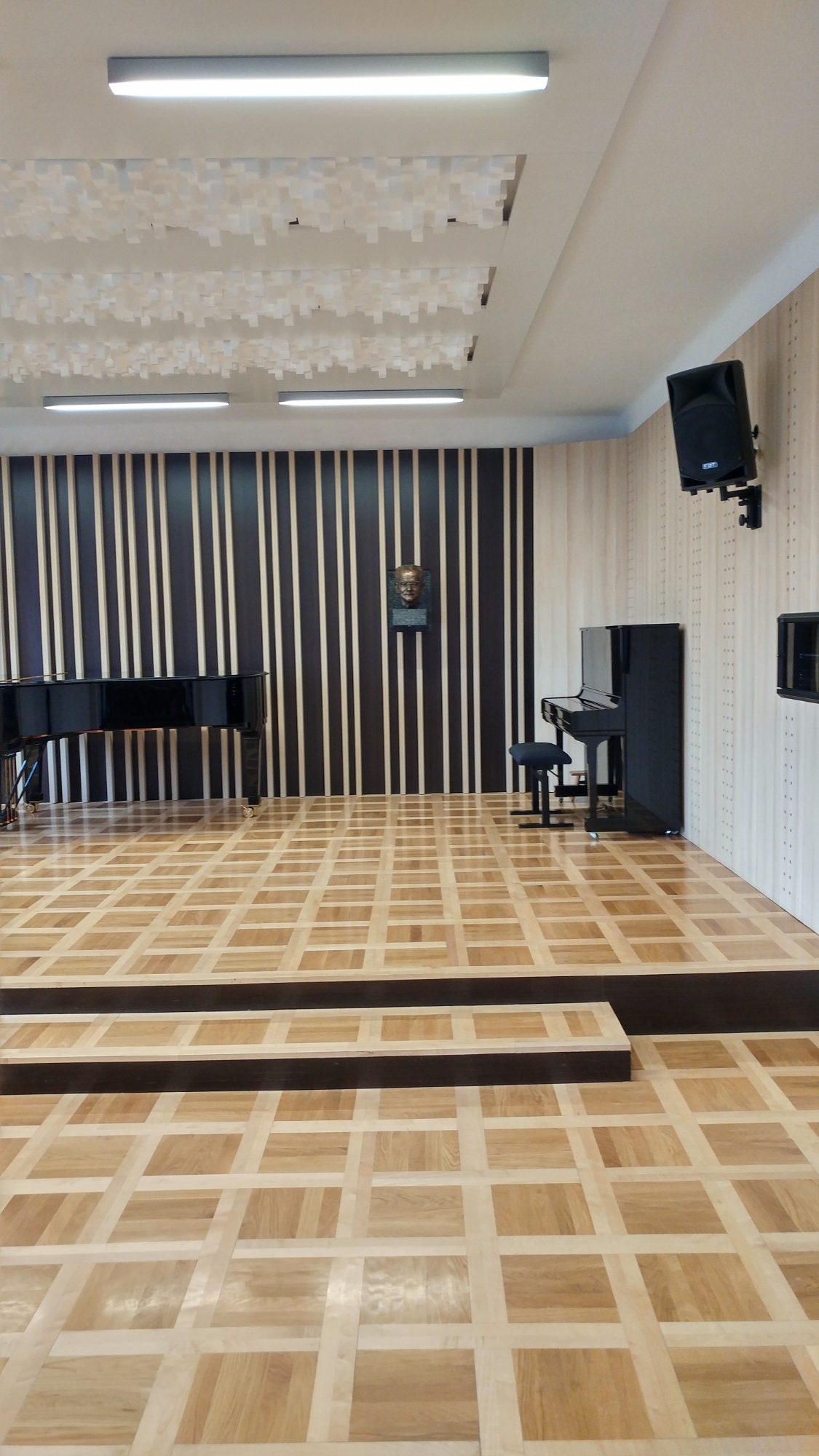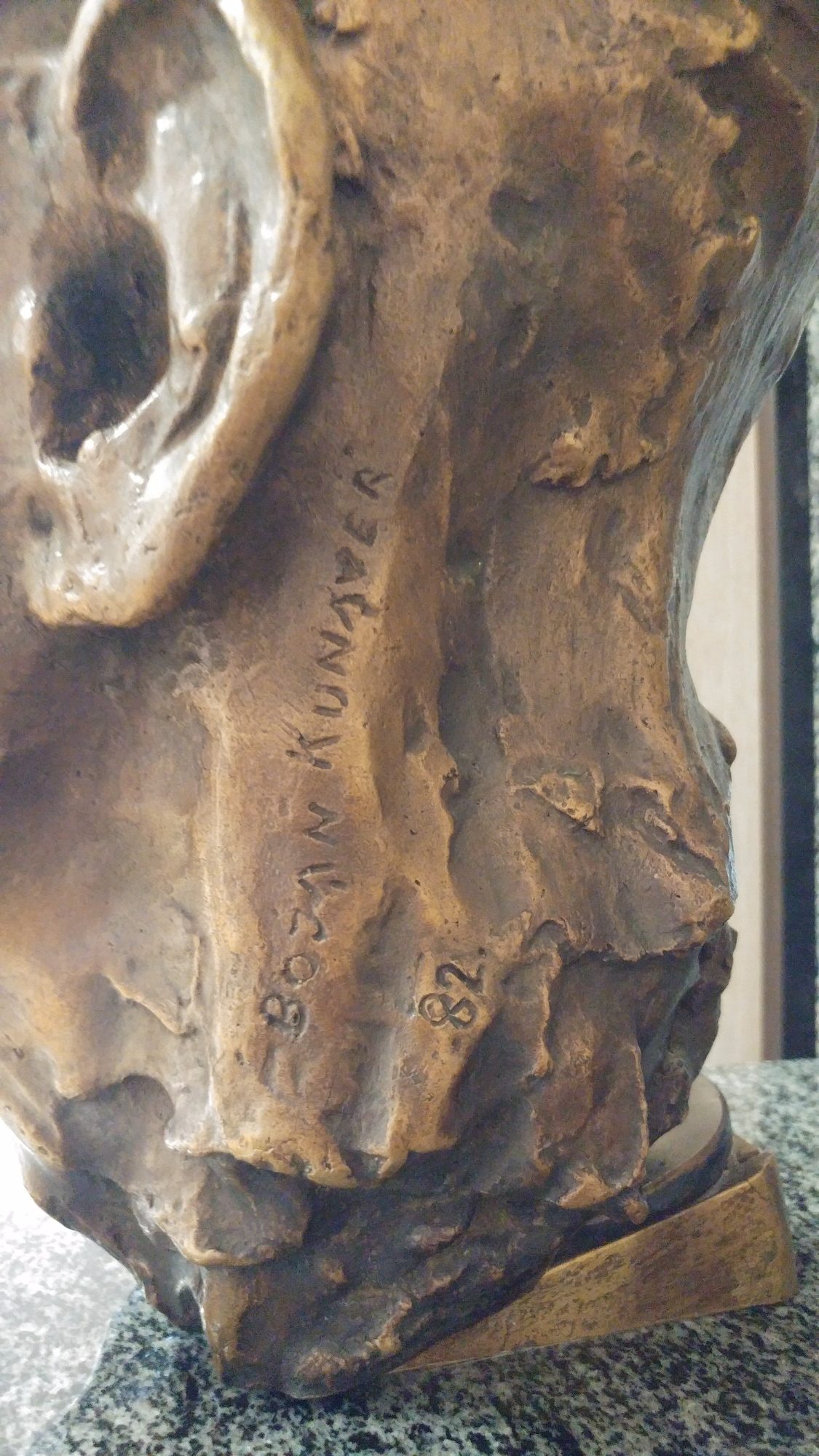A monument to Marjan Kozina was erected in 1982 in the central auditorium of the Novo mesto Music School, which has borne the composer’s name since 1971. On this occasion, the main hall was also named after Marjan Kozina. The bust was made by Bojan Kunaver.
Marjan Kozina
Marjan Kozina (1907–1966) is considered to be a central composing and conducting figure of the first half of the 20th century. A knowledgeable and erudite musician, Kozina left a profound impression on Slovenian culture particularly through his love of music, complemented by the keenly agile mind of a chess player and mathematician.
Kozina first undertook musical studies as a secondary-school student, receiving instruction from composer and organist Ignacij Hladnik. Besides studying mathematics at the University of Ljubljana, he nurtured his musical talent at the Conservatory of Music, studying violin, composing and performing with the opera orchestra. Graduating in composition from the Vienna music academy in the class of Joseph Marx, Kozina left for Prague to pursue further studies with composer and violinist Josef Suk, and there also completed his studies of conducting under Nikolai Malko.
Between 1932 and 1934, he worked at the Ljubljana Opera as répétiteur and conductor, and was director of the Glasbena matica Music Society Maribor. He then taught at the Academy of Music in Belgrade, where he was offered an assistant professorship. He scored his first more ambitious works in the Yugoslav capital, including Ekvinocij (Equinox), an opera that is seen as a high point of Slovenian operatic achievement.
After WWII, he became the first manager of the newly-established Slovenian Philharmonic. From 1950 until his death, Kozina taught composition at the Academy of Music in Ljubljana.
Kozina’s compositional accomplishments are deemed a valuable contribution to the Slovenian music treasury, although not particularly due to the introduction of innovative ideas, that is, for breaking with tradition but, quite the opposite, through expressly drawing on the legacy of the late 19th century, which allowed a wider audience to be reached. His output is extremely diversified, and includes lieder, choral pieces, children’s music, operas and, most especially, important orchestral works that display the composer’s subtle flair for instrumentation and timbre. Kozina was also a Slovenian cinema pioneer, the first major film score composer in Slovenia, whose enduringly popular Slovenian film songs Kekčeva pesem and Mojčina pesem (Kekec’s Song and Mojca’s Song), still hold broad appeal among Slovenians.
Kozina’s reputation in the history of Slovenian music is based mainly on his symphonic work, an impressive example of which is Simfonija (Symphony), which comprises a series of four symphonic poems thematically echoing the period of war. The meaningful and widely known third movement, the symphonic scherzo Bela Krajina (White Carniola), employs motifs from the body of Slovenian folklore (Došel je došel zeleni Jure, Igraj kolce – Here Comes Green George, Play the Game of ‘Kolce’). In the first two movements, Ilova gora (Mount Ilova) and Padlim (To the Fallen), the extra-musical associations of the symphonic series first suggest bloody battlefields; then in Bela krajina, as elucidated by the composer, “the sun begins to shine again and the girls dance an age-old round dance.”
Although producing an output that is neither extraordinarily prolific nor displaying pronounced traits of ‘modernity’, Kozina is nevertheless credited for tingeing Slovenian music culture with a distinct national tone.
Maia Juvanc




